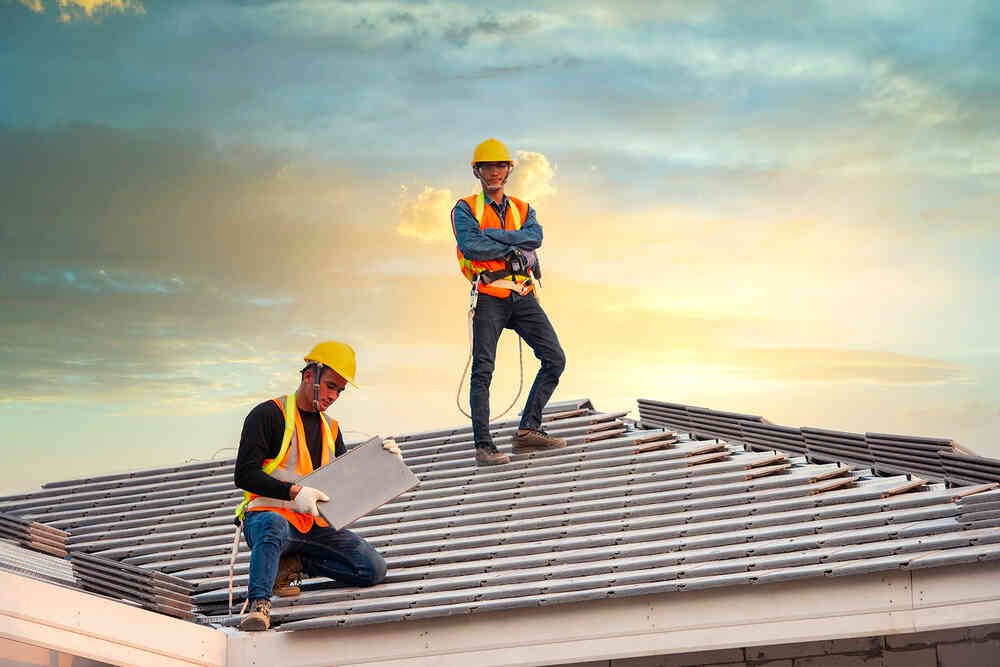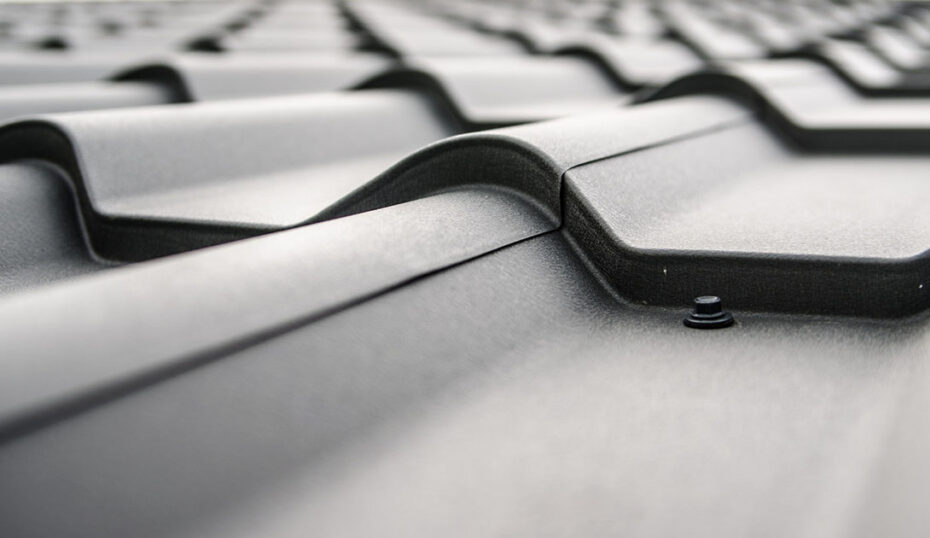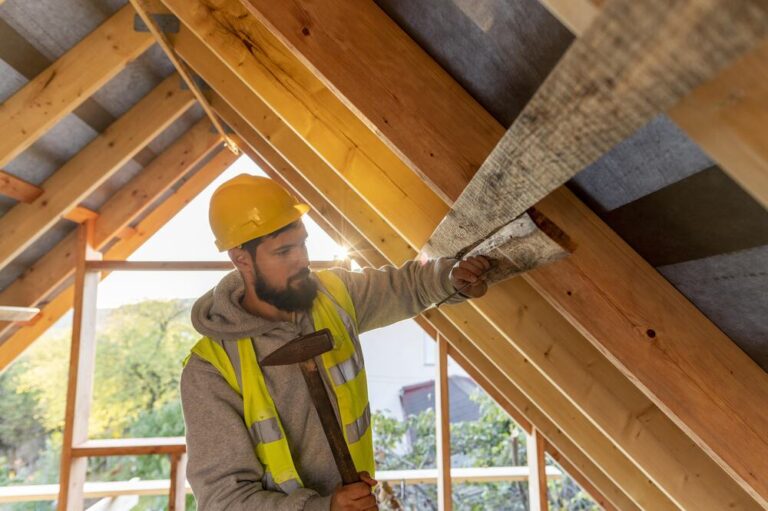- Free Estimates

Choosing the right roofing materials is crucial for protecting a home and enhancing its curb appeal. With a wide range of roofing types available, homeowners need to consider factors like climate, budget, and long-term maintenance when making a decision. In 2023, the global roofing materials market was valued at approximately USD 129.62 billion and is projected to grow at a compound annual growth rate (CAGR) of 3.9% from 2024 to 2030, reflecting the increasing demand for durable and energy-efficient roofing solutions. Whether planning a new roof installation or replacing an old roof, understanding the best roofing options is essential.
Key Takeaways✔ Roofing materials vary in lifespan, with asphalt shingles lasting 15-30 years, while slate and clay tiles can exceed 100 years. Choosing a long-lasting option reduces long-term costs. ✔ Different materials handle extreme weather conditions differently. Metal roofs withstand high winds, clay tiles excel in hot climates, and slate is ideal for snowy regions. ✔ Reflective metal roofs lower cooling costs, while insulating materials like clay and concrete tiles help maintain indoor temperatures year-round. ✔ While asphalt shingles are affordable, they require more frequent repairs. Slate and clay are expensive to install but need minimal maintenance over time. ✔ Homeowners seeking eco-friendly solutions should consider recyclable metal roofing, sustainable wood shakes, or solar-compatible materials to reduce their carbon footprint. |
Each type of roofing material has distinct benefits and drawbacks. Choosing the right option depends on factors like climate, budget, maintenance needs, and home design. The following are some of the best roofing options, with insights into their strengths, potential downsides, and ideal applications.
Asphalt shingles remain one of the most popular roofing materials due to their affordability and ease of installation. In 2020, asphalt shingles made up about 64% of the residential roofing market, solidifying their position as the most widely used roofing material in North America. They are composed of fiberglass or organic felt coated with asphalt and topped with granules to enhance durability.
Metal roofing is a highly durable and long-lasting option, available in aluminum, steel, copper, and zinc. Its modern appeal and excellent weather resistance make it a sought-after roofing type for various home styles.
Clay and concrete tiles are among the most attractive and durable roofing materials, often associated with Mediterranean, Spanish, and Southwestern architecture.
Wood shingles and shakes provide a classic, rustic look that blends well with natural surroundings. While both are made from cedar, redwood, or pine, shakes are hand-split for a more rugged appearance, while shingles are machine-cut for uniformity.
Slate is a premium roofing material known for its exceptional durability and timeless aesthetic. It is made from natural stone and can last well over a century with proper care.
Synthetic roofing is designed to mimic traditional roofing materials like slate, wood, or asphalt but with enhanced durability and reduced maintenance needs. These shingles are made from a blend of rubber, plastic, and other composite materials.

A roof is a significant investment, so its durability is one of the most important considerations. Some roofing materials can last a lifetime, while others may require replacement within a few decades.
A roof must withstand the elements, from heavy snow and high winds to extreme heat and humidity. Choosing roofing materials suited to the local climate helps prevent damage and costly repairs. Weather-related wear and tear can significantly impact maintenance requirements, making it essential to choose roofing solutions that align with the local climate.
The right roofing material can have a direct impact on a home’s energy consumption by regulating indoor temperatures and reducing heating and cooling costs.
Upfront costs and long-term maintenance expenses vary significantly between different roofing materials.
As sustainability becomes a growing concern, many homeowners seek eco-friendly roofing options that minimize waste and energy consumption.
A proper roof installation is just as crucial as selecting the right roofing materials. Even the highest-quality roofing solutions can fail prematurely if installed incorrectly. Hiring a reliable contractor ensures that the roof is installed correctly, meets local building codes, and provides the expected durability and protection. Here’s what homeowners should know when selecting a contractor and preparing for roof installation.
Ensure the contractor is licensed to work in the area and complies with local building codes. Check for certifications from industry organizations such as the National Roofing Contractors Association (NRCA) or the manufacturer of the roofing materials. Many manufacturers provide certifications to contractors trained to install their specific roofing types correctly.
Ask for at least three references from past clients who had similar roofing solutions installed. Read online reviews on platforms like Google, Yelp, and the Better Business Bureau (BBB) to look for patterns of complaints or praise. You can also ask for photos or case studies of past projects to assess the contractor’s workmanship.
Get at least three estimates from different contractors to compare pricing, scope of work, and included services. Be wary of bids that are significantly lower than others—this may indicate low-quality materials or inexperienced labor and review the quotes in detail to ensure they cover everything from material costs to labor, permits, and cleanup.
Confirm that the contractor offers a workmanship warranty, typically ranging from 5 to 25 years, depending on the roofing material. Ensure the contractor has liability insurance and workers’ compensation coverage to protect against any damages or accidents during installation.
Move cars, outdoor furniture, and decorations away from the house to avoid damage from falling debris. Cut back any overhanging tree branches that might obstruct workers or interfere with roof installation. Cover landscaping features like flower beds and shrubs to protect them from dust and debris.
Vibrations from hammering and movement on the roof can cause wall decorations, mirrors, or light fixtures to loosen and fall. Secure fragile items or temporarily store them until the project is completed.
Confirm the estimated start and completion dates for the roof installation. Ask about contingency plans for weather-related delays. Clarify daily work hours and whether the crew will clean up debris at the end of each day.
If the home has an attic, protect stored belongings with plastic sheets or tarps, as dust and debris may filter through during roof installation. Ensure pets and small children are kept indoors or in a safe area away from loud noises and construction activity.
Inform nearby neighbors about the upcoming roof installation, as noise and debris may affect them. Assure them that the contractor will clean up thoroughly after completion.

Rubber roofing is durable, eco-friendly, and resistant to extreme weather conditions, making it a great choice for energy efficiency. It is also lightweight and easy to install, reducing labor costs. However, it can be more expensive than asphalt shingles and may not offer the same aesthetic appeal for all home styles.
Heavy roofing materials like slate or concrete tiles may require additional structural reinforcement to prevent damage over time. This can increase installation costs and may not be suitable for older homes without proper support. Lightweight options like metal or asphalt shingles reduce strain on the structure and are easier to install.
Materials like clay tiles and asphalt shingles provide better sound insulation, reducing noise from rain, hail, and outside disturbances. Metal roofing, while durable, can be noisier unless paired with additional insulation layers. Thicker roofing materials and underlayment options help improve overall soundproofing for a quieter indoor environment.
In some cases, installing new roofing materials over an existing roof is possible, saving time and disposal costs. However, this depends on local building codes, the roof’s condition, and whether the additional weight is structurally safe. Removing the old roof is often recommended to ensure proper installation and longevity.
Choosing the right roofing material enhances curb appeal and maintains the architectural integrity of a home. Traditional homes often pair well with asphalt shingles or wood shakes, while metal roofing complements modern designs. Mediterranean and Spanish-style homes typically look best with clay or concrete tiles for an authentic aesthetic.
Choosing the right roofing material is a crucial decision that impacts your home’s durability, energy efficiency, and curb appeal. Whether you need a new roof installation or a roof replacement, Roofing Contractor of Prospect offers expert guidance and high-quality roofing solutions tailored to your needs.
Serving homeowners in Prospect, CT, our experienced team ensures that every project meets the highest standards of craftsmanship and reliability. For the best roofing materials and professional installation, trust the Roofing Contractor of Prospect to deliver top-tier results. Our skilled contractors provide customized roofing solutions to match your home’s style and withstand Prospect, CT’s weather conditions.
Whether you prefer asphalt shingles, metal roofing, or clay tiles, our team can help you choose the perfect option for your property. Contact the experts at Roofing Contractor of Prospect today for expert roof installation and long-lasting roofing solutions in Prospect, CT!